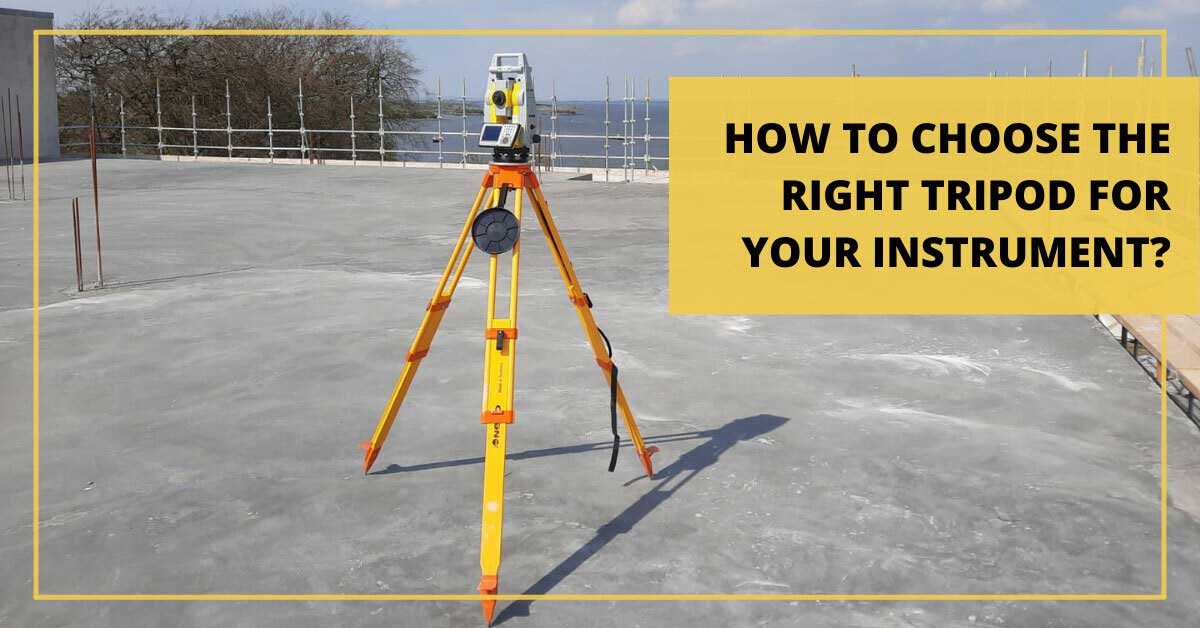How to choose the right surveyor's tripod?
Posted by Philip Hanrahan B.E., B.A., M.I.E.I. on 8th Aug 2021
Tripods are essential pieces of equipment for any surveyor. Designed to support laser levels, theodolites, and other surveying instruments, they ensure accurate measuring and levelling. Even the best, state-of-the-art surveying instruments cannot work optimally without the support a good surveying tripod offers.
With the various tripod brands, styles, and features available on the market it’s hard to choose the right one for you. To help you out we’ve rounded up a list of the things you need to consider before buying a tripod. Keep reading to see what they are.
5 things to consider when buying surveying tripod
1. Durability
You need equipment durable enough to handle whatever field conditions you might encounter, especially in Ireland. When considering durability, material of which the tripod is made should be your main focus.
Fiberglass tripods are strong, long-lasting, and resistant to the elements, which makes them ideal for prolonged use outdoors. The downside is the price, which is usually quite high.
Wood is a very popular and affordable option. It offers good stability and isn't affected by temperature changes - wood will neither contract nor expand when exposed to extreme temperature changes. Keep in mind though that wooden surveying tripods are usually heavy, so they’re not the best choice if you move your instrument around a lot.
Aluminium is lightweight and inexpensive, making it a great choice for jobs that require changing setups. They are also unaffected by humidity. As for the cons - aluminium surveying tripods are not completely temperature-resistant so they may slightly expand or shrink in extreme temperatures. Still they are great for setups that last a short period and in milder weather conditions.
2. Stability
While durability may be the most important factor when considering land survey tripods, stability is also critical. Land surveyors encounter all kinds of terrain and it isn't always flat or level. This makes stability another important factor to consider in a tripod. Stability is particularly important when working indoors on concrete or other hard surfaces to prevent the legs from spreading apart. Wooden tripods are known for their stability but it’s not just the material that determines how stable the tripod is. You need to look at parts like the tripod's feet, hinge pins, lock or steel points before you decide. All these will contribute to the stability of your tripod.
Heavy duty wooden tripod from NEDO Surveying is made out of hardwood protected with high-tech plastic coating which is more moisture-resistant than lacquer. These tripods feature brass pins, which secure the tripod’s hinges, and aluminium feet with replaceable steel points for extra stability.
3. Portability and weight
Most land surveying jobs require multiple setups and site changes. As such, it is important to consider the weight of the tripod because you will be carrying it around all day. When you’re looking for a lightweight surveyor’s tripod, aluminium is your best bet. High-quality aluminum tripods are both lightweight and sturdy enough for outdoor use.
Weight isn’t the only factor you should consider, though. It’s important to check the tripod’s size, folded length and the ease of use. There’s nothing more annoying (and time consuming) than a tripod's legs that take forever to fold or the clamps that won’t hold the legs properly when extended.
Also, it’s always a bonus when the carrying bag and/or strap is well made and comfortable. Makes all the difference during a long day in the field.
4. Height
Most standard tripods have telescopic legs and extend to optimal heights and work great for most common surveying and levelling tasks. But there will be times when you simply need a little more length. For instance, if you’re working with heavy construction equipment, you may have to elevate your machine control laser to an extra high level. In that case you might want to consider getting a tripod with an elevating column like the Crank Tripod P300 from Laserliner.
Remember! Telescoping legs are great for added height, but you still want to make sure the tripod is sturdy without being too heavy. Having dual clamps on each leg helps ensure stability while also enabling you to adjust the tripod as needed. You may also need to consider added safety features when using an extended-length surveying tripod.
5. Price
As with all purchasing decisions, you have to take into account what budget you have when choosing a tripod for surveying. It may not be as important as portability and durability but it is something not many can just ignore. Fortunately there are plenty of options now when it comes to surveying accessories. You don’t have to break the bank to get all the essential features. It all comes down to what you really need.
Browse our range to find a tripod that fits both your needs and budget.
---
Need help choosing the right tripod for your instrument? Give us a call at 01 257 2323 or email info@hitechniques.ie





